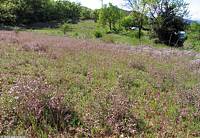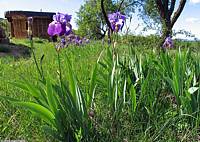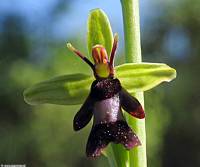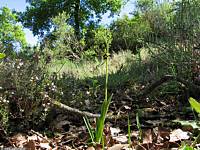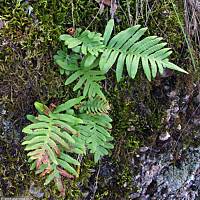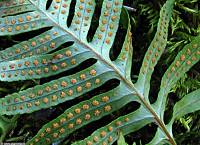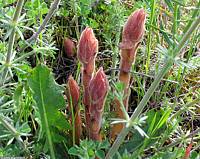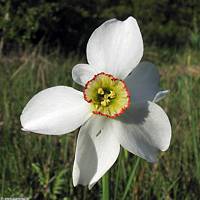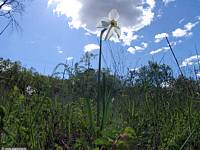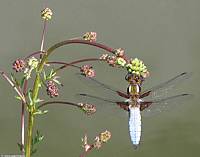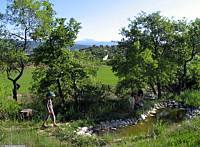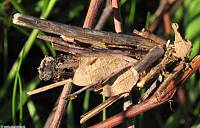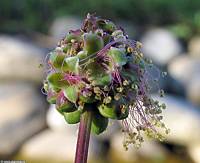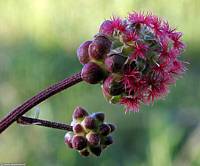|
|
Nature
Switched On
|
|
|
introduction |
2009 May 1 to 3, Friday to Sunday
|
|
|
Iris
germanica is also flowering exceptionally well on the terrain
border. At the back the garden house in construction. |
||
|
Another orchid! Number nine on the terrain. It is the Fly orchid
(Ophrys insectifera), a
fragile and gracious species whose flo
|
||
| The two
upper petals of this Ophrys insectifera resemble
perfectly a pair of antennae of a big fly. Sunday 16:52 |
This is one of two plants of Ophrys insectifera growing in the half-shade on the central terrace. |
|
|
Another surprise was the detection of the third fern on the terrain:
the Common Polypody (Polypodium vulgare). To the
family of this species belong many epiphytes (for example the
popular houseplant Staghorn fern (Platycerium
bifurcatum) and plants that
grow on rocks and so is this one. It grows on the vertical side of
a rock in the shade of
some Portuguese oaks.
This reddish Broomrape (on the right) was never properly identified and I will still have to examine the future flowers (and scent) but it is probably Clove-scented broomrape (Orobanche caryophyllacea) because of the neighbouring Galium fruticescens on which it parasitizes. |
Polypodium
vulgare on the highest terrace bordering the wood. |
|
| The
reverse side of a Polypodium vulgare leaf with
the circular sori. Friday 16:27 |
Orobanche
caryophyllacea
among some plants of Galium
fruticescens
and Taraxacum
officinale. |
|
|
|
||
|
Close-up of Narcissus poeticus. Saturday 8:09 |
||
|
Almost all ten bulbs planted of
Narcissus poeticus emerged. Friday 16:38 |
||
|
All weekend the ponds were the scene of an endless chasing of two
male Broad-bodi
This case of a casemaker (larva of the caddice fly, Order Trichoptera) has been abandoned some time ago by the fly. |
||
|
Libellula depressa on Sanguisorba minor
above the pond. Friday 17:49 |
Blanca and two younger friends chasing tadpoles. |
|
|
Casemaker that has crept on shore for its last metamorphosis. Saturday 8:27 |
||
|
One of the most abundant plants on the terrain, Salad Burnet (Sanguisorba
minor) is flowering now. The upper flowers of the
inflorescence are female and show some conspicuous red stigma hairs.
Below are the male flowers with long filaments when flowering.
Curiously sometimes the female flowers bloom first and other times
(or other places?) the male ones.
|
||
|
The red stigma hairs of the female flowers of Sanguisorba
minor. Saturday 8:35 |
Male flowers of Sanguisorba
minor with the long red filaments. Saturday 8:38 |
|
|
introduction
|
|
